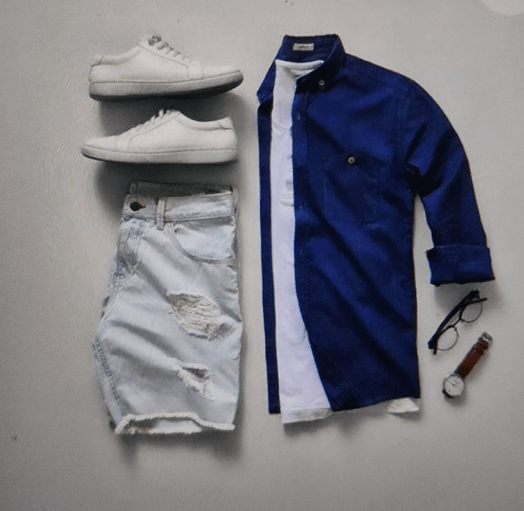Fashion DefinitionFashion is an important concept in today's fast-changing world, continuously changing, updating, evolving, and adapting. It can be defined as clothing makeup that most people wear to appear unique. Fashion changes from place to place, person to person, state to state, country to country, and even class to class (poor, middle, and rich class people). Fashion originated from uniforms that were designed for practical purposes. Looking into earlier times, fashion has been symbolically used to represent social status, personal identity, money, and political power. More inclusive and diverse than ever, fashion is what we wear today. People from all races of life may now participate in fashion and express themselves via their wardrobe choices thanks to the growth of social media and quick fashion. There is something for everyone in the fashion industry, from high-end luxury brands to reasonably priced quick fashion outlets. 
Fashion continually changes and adapts to new trends and styles, which is one of its most interesting aspects. Fashion constantly pushes boundaries and discovers new territories with new capitals, whether through striking hues and patterns, clean, minimalist designs, or repeating older trends. Sustainable fashion, which focuses on producing apparel that is both environmentally and socially responsible, is one style that has grown significantly in popularity in recent years. Gender-neutral fashion, which challenges traditional gender conventions and enables people to express themselves in a way that feels genuine to who they are, is another trend that has gained much traction in recent years. Impact of Fashion in FutureThe upcoming generation is significantly impacted by shifting fashion trends. Young people are especially receptive to its impact; fashion is a crucial component of contemporary culture. The upcoming generation is impacted by shifting fashion trends in the manner listed below:
The Emergence of Fashion in IndiaThe intriguing history of Indian fashion can be traced back thousands of years, reflecting the nation's vibrant traditions, culture, and history. India's contribution to the global fashion industry cannot be understated; the country has a long and diverse history of textile manufacturing. In the past, cotton, silk, and wool from nearby farms were used to make most of the apparel in India. The dhoti for men, saree for women, and salwar kameez for women are just a few examples of the traditional clothes worn in India for generations and are still in style today. The Indian textile industry prospered throughout the Mughal Empire, which ruled from the 16th to the 19th century, and materials like muslin and brocade rose in popularity. The Mughals were famed for their adoration of grandeur and luxury, and this was evident in their attire, which was embellished with elaborate embroidery, gems, and gold thread. From the 20th century onwards, new modernization and acceptance have been started in India following fresh trends. People in India started copying fashion trends from the western part of the country, which had been developed during the colonial period, and the saree was a favorite among them. Some famous Indian designers are Ritu Kumar, Rohit Bal, and Manish Malhotra. The fashion business in India has been expanding and changing over the past several years, and Indian designers are now known worldwide for their original and distinctive creations. The nation is a center for fashion and design thanks to its long history in the textile industry and diversified and lively culture. The emergence of eco-friendly and sustainable fashion in recent years has been among the most fascinating developments in Indian design. Indian designers use time-honored methods to produce fashionable and environmentally sustainable clothes, such as handloom weaving and natural dyeing. Is it Right to Claim that Fashion Affects People's Thinking?Additionally, unattainable beauty standards promoted by fashion trends can exacerbate problems with body image and harm people's self-esteem. As a result of the pressure to fit in with these trends, a culture of competitiveness and comparison may develop, which is bad for mental health. Cultural appropriation in fashion can also destroy cultural traditions and reinforce negative preconceptions. The underrepresentation and exploitation of marginalized communities by the fashion industry in the past can harm people's legacy and cultural heritage. Even though the fashion business as a whole does not intrinsically hurt people's minds and legacies, some of its practices can. Acknowledging and solving these concerns is critical to developing a more sustainable and inclusive fashion culture that celebrates innovation, originality, and social responsibility. Scope in the Fashion IndustryThe fashion industry is a wide sector that offers a variety of career opportunities and plays an important role in employing the population. Fashion industry expertise includes design, production, marketing, and retailing. Different skills such as selling and communication skills and designing are most important to get a job in the fashion industry. Let us look into the expertise now:
The fashion industry offers a diverse range of career opportunities that require different skills and expertise. The industry constantly evolves, and the growing demand for sustainable and eco-friendly fashion creates new professional opportunities. With the right training and skills, there are plenty of exciting career opportunities in the fashion industry. ConclusionFashion is an incredibly important industry that plays a vital role in our culture and society. It allows us to express ourselves, explore new styles and trends, and connect with others who share our passions and interests. Whether you are a fashion enthusiast or enjoy expressing yourself through your clothing choices, fashion is a powerful tool that can transform lives and shape our world.
Next TopicIntegers Definition and Examples
|
 For Videos Join Our Youtube Channel: Join Now
For Videos Join Our Youtube Channel: Join Now
Feedback
- Send your Feedback to [email protected]
Help Others, Please Share










